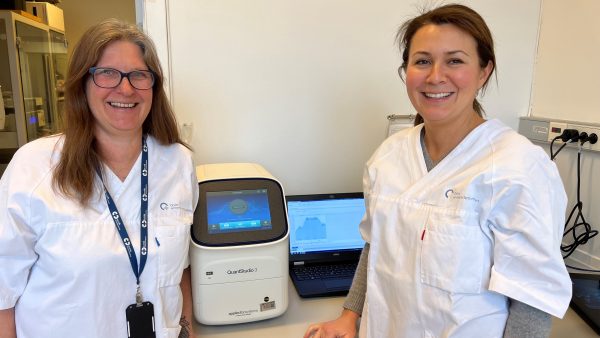—
A steady-handed robot for faster and more precise genotyping


A new method for genotyping is now being implemented at the Laboratory and Technical sections at IEMR. It is faster, more reliable and reduces cost.
—
Genotyping is the process of determining the DNA sequence at specific positions within the genome. Until recently, genotyping was performed with the technique polymerase chain reaction (PCR) where DNA sequences are amplified by using three repeating steps: denaturation, annealing and elongation. After 20-40 cycles of amplification, the results were analyzed on agarose gels. This method was quite ineffective and had some limitations in sensitivity, demanding many samples to be re-analyzed.
Recently, IEMR have implemented a new method for genotyping of transgenic animals using Real-Time Quantitative PCR. When performing genotyping with this method, the PCR-technique is still applied, but it also includes a custom designed TaqMan probe to increase the specificity.
The method uses a pipetting robot that is both fast and eliminates the risk for procedural mistakes.
“Real-Time Quantitative PCR is a far more sensitive method than gel analysis, and hardly any samples need to be rerun”, says Lisbeth H. Winer, head of the Laboratory and Technical sections at IEMR.
“Due to fewer mistakes and need for rerunning, we expect a significant decline in reagents cost. An additional benefit for those doing the hands-on work is the reduced strain on shoulders and neck caused by static pipetting-work. In total, a win-win situation.”
